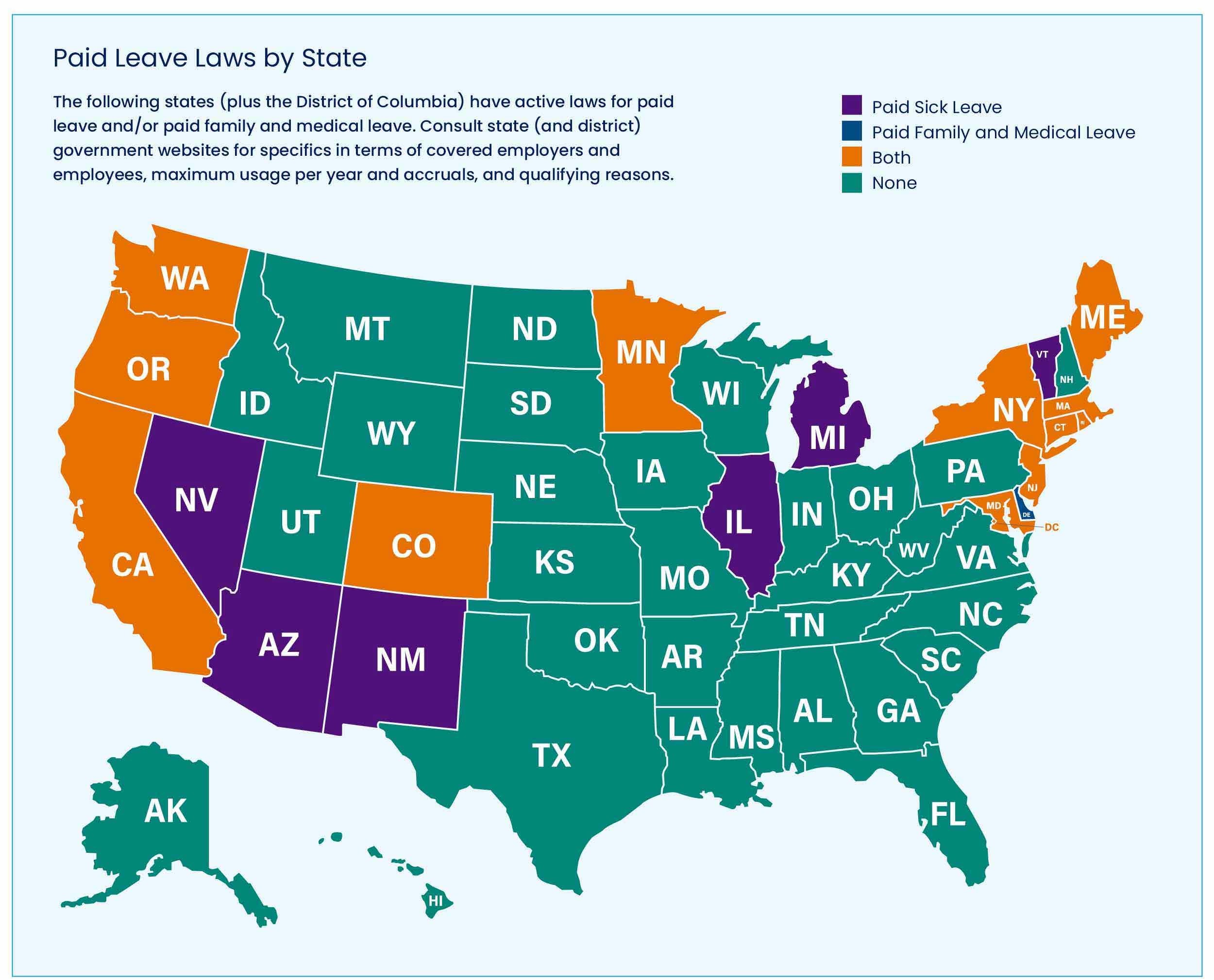- The new law is a first. New York is the first state in the nation to mandate paid prenatal leave for pregnant employees. The new law takes effect Jan. 1, 2025.
- Benefit for lower-wage workers. This prenatal care benefit is especially important for birthing parents in low-wage jobs, where hours are rigid and getting approval for time off can be difficult.
- The potential start of a trend. Experts believe some states (and employers) will follow the Empire State’s lead and offer similar prenatal leave benefits, although it can be more complicated for larger employers that operate in multiple states.
On Jan. 1, 2025, New York will become the first state in the nation to require paid leave for prenatal care. The new law, which was signed by Gov. Kathy Hochul on April 22, requires New York employers to provide up to 20 hours of paid prenatal leave within a 52-week period for pregnant employees.
Read: Pregnant Workers Fairness Act Reaches Final Milepost
Employees may use the leave “for the healthcare services received by an employee during their pregnancy or related to such pregnancy, including physical examinations, medical procedures, monitoring and testing, and discussions with a healthcare provider related to the pregnancy.”
The leave is available in addition to, and may be taken separately from, any current sick leave benefits available under New York’s Paid Sick Leave law, said Robert Gosseen, senior counsel at Schwartz Sladkus Reich Greenberg Atlas LLP.
Although this displays progression in the area of paid leave, Amy Beacom, founder and CEO at the Center for Parental Leave Leadership (CPLL), said the U.S. remains the only industrialized country without a national paid leave program/policy.
Currently, 14 states, plus Washington D.C., offer some form of paid family and medical leave. Each of those programs are different, Beacom said, creating serious compliance and leave-related navigation issues, especially for multi-state and remote employers.

According to Beacom, New York’s Paid Family Leave is a “fairly cumbersome application process … and it was not designed to be used for medical leave prior to birth and particularly not for short, intermittent amounts of time for prenatal appointments.”
Beacom said the protected right under the new prenatal leave law is especially important for birthing parents in low-wage jobs, where hours are rigid and getting approval for time off can be difficult.
“Ideally, employers will be able to roll prenatal leave into existing processes and communications that they are already doing related to New York’s current sick time policy without too much trouble,” she said.
Kate Mueting, co-chair of the discrimination and harassment practice group at Sanford Heisler Sharp LLP, agreed that the New York law is especially notable because it extends paid prenatal leave benefits to all employees, even those working for smaller organizations and lower-wage workers whose employers may be unlikely to provide these benefits on a voluntary basis.
“Employees need not accrue this leave before taking it,” she said. “In other words, once the law goes into effect, all pregnant employees can take up to 20 hours of paid leave [for covered healthcare services].”
What’s Next for States and for Employers?
Mark Goldstein, a partner on the New York labor and employment team at Reed Smith LLP, noted that the state often is at the forefront of new employment laws. “So, I would expect that other jurisdictions will indeed consider similar measures in the coming months and years,” he said.
For now, experts such as Beacom advise New York employers to update their policies and handbooks to include prenatal leave and provide clear, simple ways for pregnant employees to request time off for prenatal care, receive approval and get paid. In addition, she said employers should train their managers and HR staff about the changes and get the message out to employees so they are aware of this new benefit.
“Employers need to keep an eye out for the new regulations that will clarify details in the coming months and be prepared to consult with their employment lawyer and/or leave experts for support,” she said.
Editor’s Note: Additional Content
For more information and resources related to this article, see the pages below, which offer quick access to all WorldatWork content on these topics:







